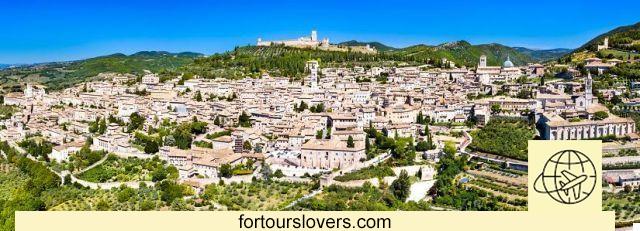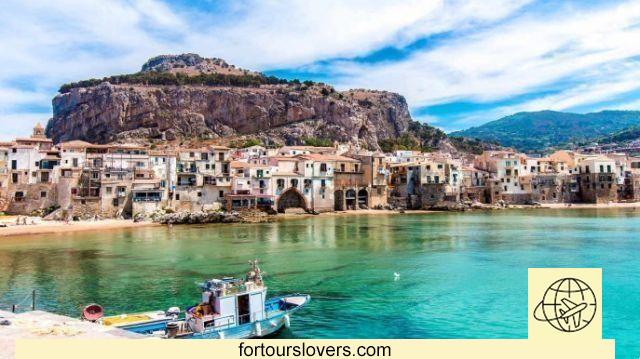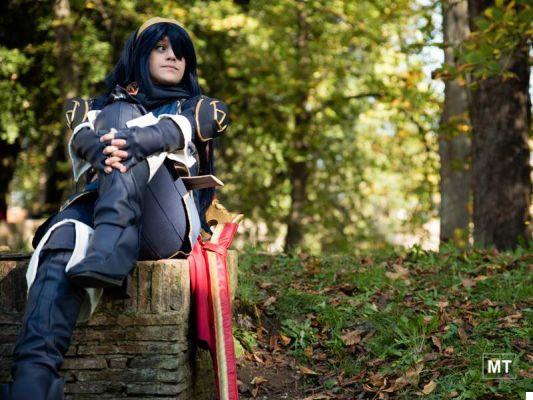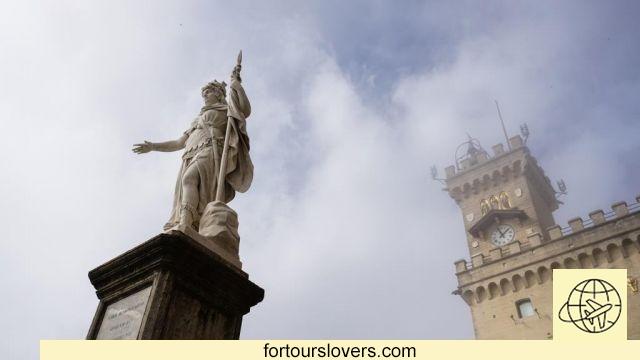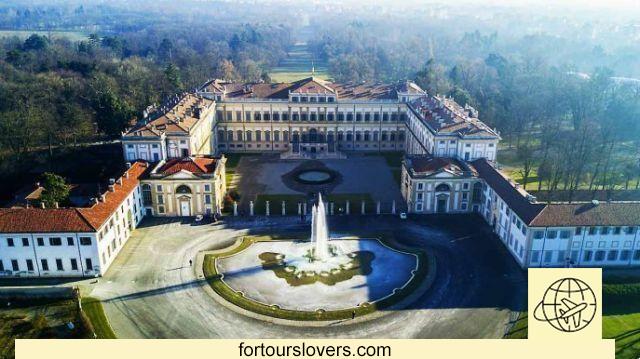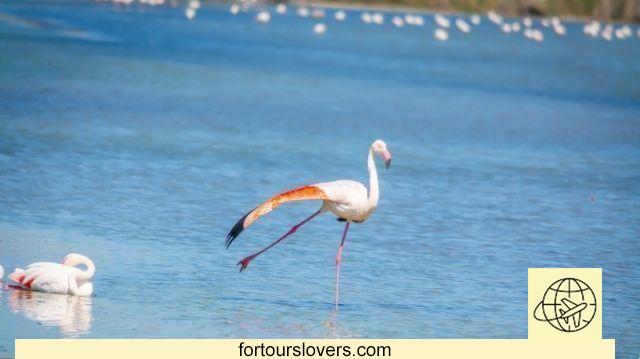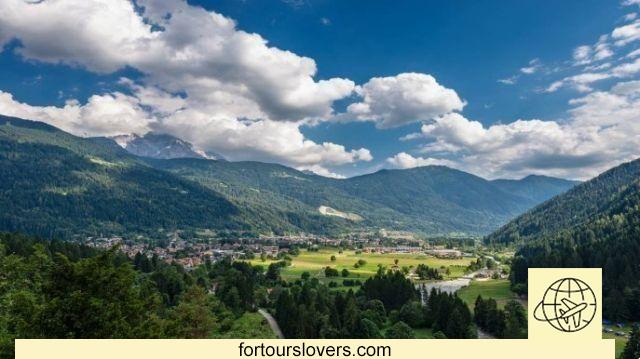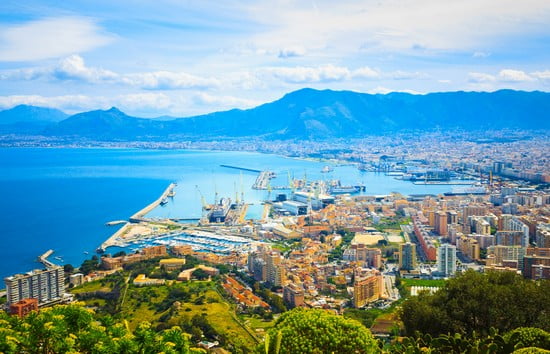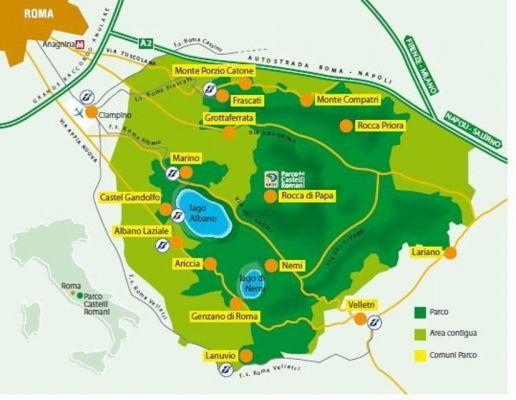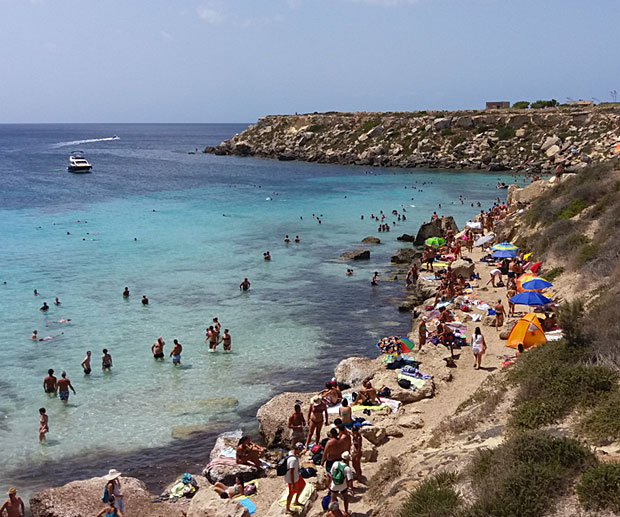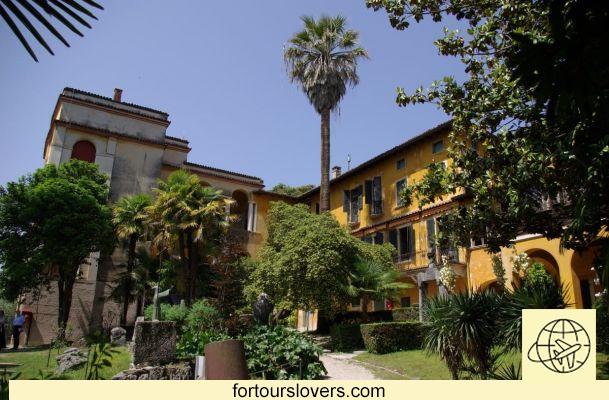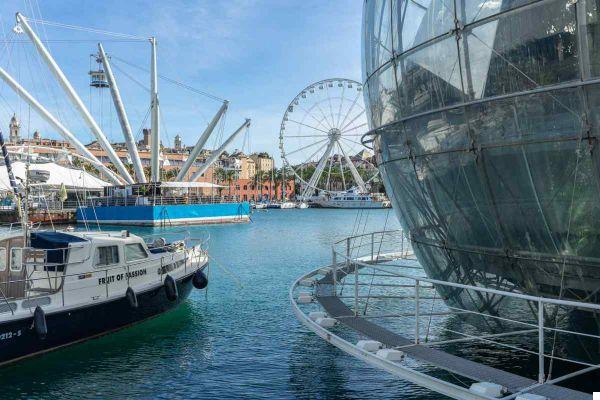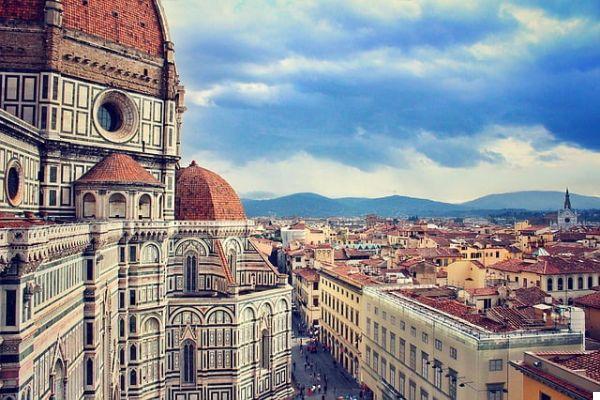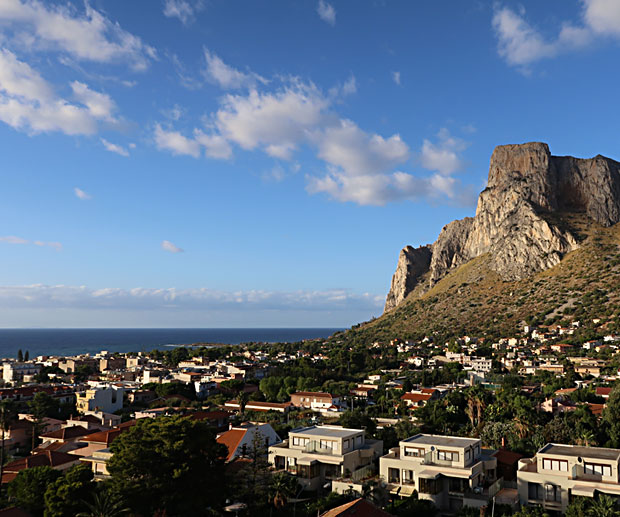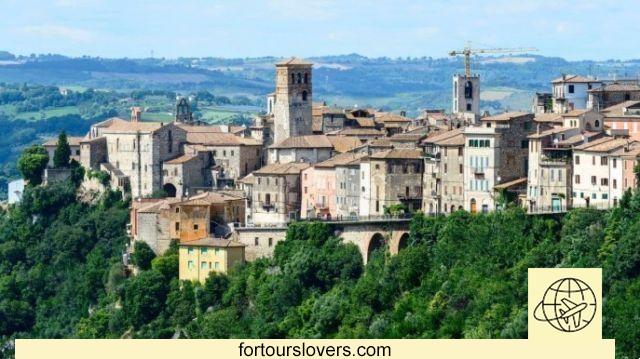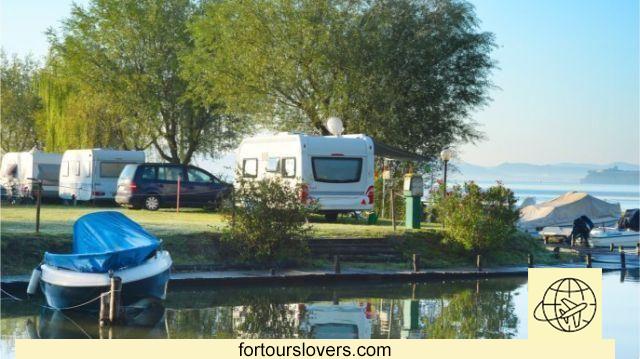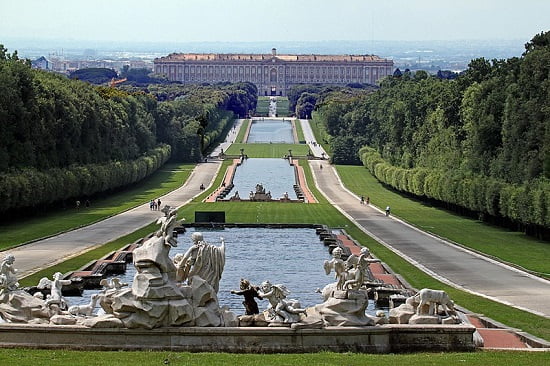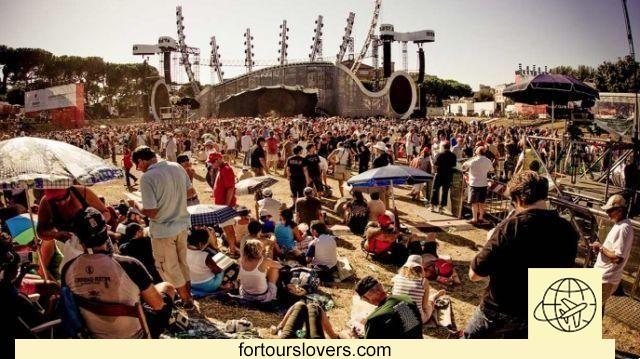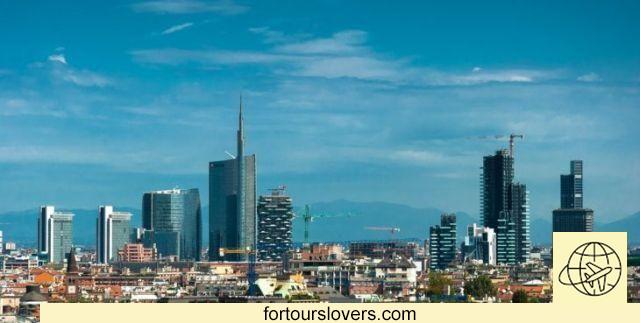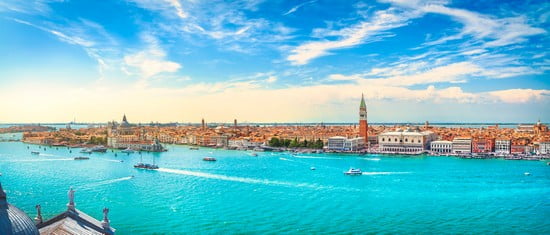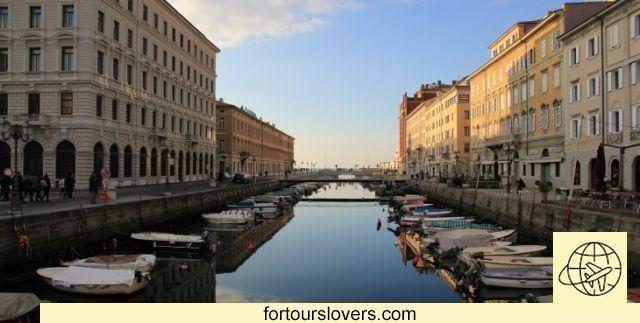
Trieste
12 things to do and see in Trieste and 2 not to doThere are no queues for museums; there is no throng of Venice, Florence and Rome; there are no "tourist traps" that promise the best of local cuisine and instead offer poor services. In short, there are no drawbacks typical of the great Italian cities of art and this makes it particularly interesting from a tourist point of view. It happens that in the city you stop before or after reaching the Slovenia and Croatia, but in recent years the reverse has also happened: Trieste is the base from which, if you wish, you can indulge in some exits outside the border. After all, there are many things to do and see. A city bridge between Western, Eastern and Southern Europe, with one of the most important ports in the Mediterranean and numerous churches, museums, literary cafes, Art Nouveau buildings, artisan shops to visit in complete tranquility. Happy reading.
1 Piazza Unità d'Italia and Molo Audace
The value of this walk also lies in the evolution of the place names. To say, piazza Unità d'Italia, where the Municipality, the Prefecture and the Regional Council of Friuli Venezia Giulia are based, has been called this way only since 1955, after the end of the historical experience of the Free Territory of Trieste. Before, it was called St. Peter's Square, Piazza Grande and, finally, after 1918, only piazza Unità. That same year, November 3, 1918, on the San Carlo pier docked the"Bold", destroyer of the Italian Navy. Hence, four years later, the decision to change the name of the pier too, with the simultaneous affixing of one wind rose in bronze in memory of the event. Beyond the individual episodes and all the related anecdotal, this pleasant walk is really the first thing that almost all tourists who set foot in the city for the first time do. In fact, there is everything inside: the history, we said, but also themodern art and l 'architecture of this bridge city between the Mediterranean and continental Europe. Highly recommended!
2 Castle of San Giusto
Property of the municipality since the 30s, the Castle of San Giusto is considered by many to be the symbol most important of Trieste. The location certainly counts, the fact of being on the highest hill in the city from which it was possible to easily control everything that happened downstream, especially the dangers coming from the sea. Not surprisingly, Colle San Giusto is the oldest settlement in the city, modified by Romans, Venetians and Austro-Hungarians over the centuries. Inside the structure, which the municipality uses for cultural events and events, there are two museums: the civic Museum, which houses, among other things, a rich collection of weapons (armor, swords, daggers, pistols, etc.) and the Lapidary tergestino, a museum space where 130 stone finds from the Roman age are kept, including funeral monuments and bas-relief sculptures.
Working Time
>> Tuesday to Saturday 10.00 / 17.00
Monday closed
tickets
full 6,00 € uro
Reduced 4,00 € uro
Just walls 1,00 € uro
3 Cathedral of San Giusto
In addition to the Castle, on the top of the hill overlooking the city there is also the Cathedral, outcome of the union of two pre-existing churches dedicated to Santa Maria and to the martyr San Giusto (hence the name). The basilica of San Giusto is a particular church that due to the simplicity of the external façade, surmounted by an imposing one Gothic rose window, combines the wonderful decorations of the floor and the two side apses. Mosaics depicting two icons ofByzantine sacred art: Our Lady, parent of God (Teotokos) and the blessing Christ (Pantocrator). The climb to get to the top is also very impressive. Ditto the panorama, with the spectacular view from above of the city, the sea and the port.
Working Time
>> 6 April - 30 September 7.30 / 19.30;
>> 1 October - 5 April 8.00 / 12.00; 15.30 / 19.30
4 Opicina Tram
You can also understand that Trieste is a unique city by taking the tram. The Opicina tram, in fact, it is not just a public means of transport, but one suggestive and panoramic trip out of town. This is also the case for the people of Trieste who use it daily, let alone a tourist who at some point finds himself "hung" - it is appropriate to say - on a slope of 26%. And yes, because this ancient tramway, dating back to late XNUMXth century it was inaugurated to connect the small town of Opicina with the city center. Over the years, obviously, this service has favored the expansion of hilly buildings and so the stops have gradually become more and more. There line 2 tram departs from Oberdan square, in the center of Trieste, and ends in Villa Opicina, 329 meters above sea level. Five kilometers of travel, including the famous 800 meters sloping we mentioned above, and 12 stops. Woe to forget your camera!
More information on timetables and characteristics of the line: www.tramdeopicina.it
5 Miramare Castle
In Trieste there is not only the Castle of San Giusto. About 10 kilometers from the city center is the Miramare Castle. An exceptional location, on the promontory of Grignano, built between 1856 and 1860 to make it the princely residence of Duke Maximilian of Habsburg and consort Charlotte of Belgium. The year before the start of the works, Massimiliano d'Asburgo had bought this vast area, fascinated by its impervious nature and the position overlooking the sea. In fact, in addition to the Castle, now used as a Historical museum, the noble was anxious to transform into park the more than 20 hectares of land around the building. Park that is still an extraordinary testimony of man's ability to transform, demonstrating, where ever there was still a need, that the distance between "nature" and "culture" is much less than what we are usually led to think. It is not over, because in the 90s of the last century also the water mirror around the area was transformed into Marine reserve. A marine protected area where you can practice several underwater activities from diving to snorkeling.
For timetables, prices, exhibitions and activity calendars:
www.castello-miramare.it
www.riservamarinamiramare.it
6 The coffees
Trieste's relationship with coffee is an ancient and complex relationship. For years, his port it is the most important for product marketing. They come here daily beans e millstones coming from every corner of the planet, destined for subsequent marketing throughout Europe. It is therefore not surprising that an industry linked to the import, processing and export of coffee was born in Trieste, which certainly has its most representative company in “Illy”. But "coffee" in Trieste also means historical places that it would be an understatement to define simple bars, even if this is what it is. Meeting places for writers e poets - just to name a few, Italo Svevo, Umberto Saba, Claudio Magris and Paolo Rumiz - but in the past also places of incubation ofTriestine irredentism. Finally, coffee in Trieste also means ordering a "head in b so much"Or"drop". With the first order we mean an espresso macchiato in the glass, while with the second, a coffee with a drop of foam. And it's certainly not over because then there are the "black"(Expressed in a cup), the"black in b”(Espresso coffee in a glass) and many, many other variations to try.
7 Victory Lighthouse
A lighthouse, the most powerful in the Adriatic, which is also a monument to the fallen of the First World War. The inscription at the base of the structure "Shine and remember the fallen on the sea" tells us immediately what the intentions of theTrieste architect Arduino Berlam who designed the work in the aftermath of the defeat of Caporetto and the battle of the Piave. The writing is not the only commemorative trace of the victory over the Austo-Hungarian Empire. We are there sculpture of the Unknown Sailor, work of Giovanni Mayer, made by the master stonemason Regolo Salandini, and the 'again of the "Audace", the destroyer of the Italian Navy docked on the Trieste pier in 1918. The construction of the Vittoria Lighthouse began in January 1923 and ended in May 1924. The inauguration of the structure, more than 60 meters high, was personally attended by the King Vittorio Emanuele III. After seven years of closure, from 1979 to 1986, the lighthouse is once again open to visitors thanks to a convention of Ministry of Defence with the Province of Trieste. The only exception is the lantern which depends on the Headquarters of the Italian Navy Headquarters in Venice. The Province manages the visits with its staff and according to some guidelines for the reading of which we refer to the official website (read here). Last curiosity: on the dome stands the copper statue of the Winged Victory, another work by the Trieste sculptor Giovanni Mayer, made by the craftsman of copper and iron Giacomo Sebroth.
8 The synagogue
The Synagogue is the most tangible sign of the centrality of the Jewish community in the history of the city. Just to mention a fact, in 1938 Trieste had over 6000 residents of Jewish origin. Therefore, five years later, in 1943, when the German occupation began, the city paid a high tribute both in terms of broken lives ((the Risiera di San Saba was transformed into the only one of the four concentration camps built by the Nazis in Italy with crematorium) and for the stolen wealth and works of art. Many of which were kept in the Synagogue promptly occupied by military of the Reich under the command of the Austrian Friedrich Rainer. Therefore, the reopening of the building for worship at the end of the Second World War was a very important event from a symbolic point of view. Having said that, the Synagogue of Trieste also deserves from an aesthetic point of view. Everything, from rose window (see photo) ai floors, decorations and chandeliers testifies the height of a community that is still important, even if decimated compared to the last century.
Working Time:
Guided tours (duration about 45 minutes)
Individuals: Sunday at 10.00, 11.00 and 12.00;
Monday at 16.00 and 17.30;
Tuesday at 10.00 and 11.30; Wednesday 16.00, 17.30.
It is not necessary to book.
Groups: from Sunday to Thursday, times to be defined by booking at the Key Tre Viaggi (www.keytreviaggi.it/)
The synagogue is closed to the public on Jewish and civil holidays.
Inputs
Individuals
- under 10 and disabled: free
- children 10-18: € 2,50
- adults: € 3,50
Groups (minimum 25 participants)
- adults: € 3,00 per person
- students: € 2,50 per person (free teachers).
9 Giant cave
The Cave Gigante is what the Anglo-Saxons define in advertising language "Must", that is to say an unmissable appointment, something absolutely to do. And in fact, there is almost no list with things to do and see in Trieste that does not list this cave dating back to Neolithic. Cave which also provided a fundamental contribution to the birth of the modern caving, since the first explorations supported by scientific criteria were carried out precisely in this ravine starting from 1840 of the last century. The tourism development, however, dates back to the early 900s and is subsequent to the construction of the entrance staircase (500 steps) and the electrification of the "Great Cave", the main room of the cave located 120 meters below the surface, about 170 meters long and about 80 meters wide. Obviously, such an important site from a naturalistic point of view could only have a digital one with all the information necessary for the visit (www.grottagigante.it). For our part, the only recommendation is to wear a clothing suitable for the excursion. Not only shoes, but also a sweatshirt (or similar garment) taking into account the depth and the different temperature. To be seen!
10 Risiera di San Sabba
The only Nazi concentration camp in southern Europe. It is with this reason that in the 1965 il President of the Republic Giuseppe Saragat declared, with a specific decree, the Risiera di San Sabba National Monument. After 1943, the Germans transported thousands of partisans, Slovenes, Croats, Jews and political opponents captured during the sweeps to this area used for rice husking. Many of these - the most reliable estimate is 5.000 people - were killed on the spot, while others, including women and children, were transferred to concentration camps in Auschwitz e Dachau. This place of death and extermination has been used as a Civic Museum precisely in order not to make the sacrifice of so many innocent victims in vain. Immediately after the entrance, on the left, is the "Death cell", a large square room that served as a waiting room for the condemned. Executions were carried out by shooting, or with a blow to the back of the head. The gassing, on the other hand, took place with the exhaust gases of some vans as there was no real gas chamber. The oven, on the other hand, was there indeed, even if the Germans at the time of evacuating the area they tried to blow it up, hoping to erase its traces. Signs that have remained evident, starting from the iron club used for the executions (the one on display, however, is a copy as the original was stolen years ago), not to mention the ashes and human remains of thousands of people. In short, a "Place of memory" of fundamental historical importance that every year regularly exceeds 100.000 visits. Except January 1st and December 25th, the Civic Museum of the Risiera di San Sabba is open to the public every day from 9.00 to 19.00. L'admission is free.
11 What you eat
Trieste cuisine is a gastronomic melting pot, a hybrid where the Istrian-Dalmatian Mediterranean tradition, That continental Austro-Hungarian is that farmer of the karst hinterland. So there is everything: fish soup, g, sausages e legume soups. Then there are the sweets and desserts of the historic Trieste cafes which in several cases have also become restaurants. Or rather a cross between a bar, a restaurant and a diner where you can sit and choose everything. First, second, white and red by the glass, presnitz, coch, kuguluf (these are the names of some sweets) and over a hundred different types of coffee and cappuccinos. In short, you really are spoiled for choice. Seeing is believing!
12 The surroundings
Il Friuli Venezia Giulia it is a region so beautiful and rich in history that to indicate one place inevitably does wrong to another. That said, the Isonzo Foci Nature Reserve definitely worth a visit. The reserve extends into the municipalities of staranzano, San Canzian d'Isonzo, rivulet e Grado and is approximately 40 kilometers from Trieste. Alternatively, so to speak, the Caves of San Canziano (o Škocjan Caves) on Slovenian territory.
For more information:
www.parks.it/riserva.foce.isonzo
www.park-skocjanske-jame.si/it
1 Don't call a person from Trieste a Friulian
Trieste is in Venezia Giulia and the people of Trieste are very keen not to get confused territorial areas. Also dialects between both geographical areas they are different, so be careful: someone might even be offended to hear of Friulian.
2 Trieste is not close to Trento
The fact that "Trieste and Trento”Is the name of several Italian squares it leads many to believe that the two cities are close when not really attacked. Mistaken. Trieste and Trento are about 300 kilometers away and what they have in common is not there geography, but a much more important one historical circumstance: the November 3 1918, in fact, the Italian troops entered the two cities putting an end to the Austro-Hungarian dominion in the territories south of the Brenner. In fact, the date that marks the end of the World War I with the victory of Italy and the simultaneous signature (on the same day) of theArmistice of Villa Giusti a Padova.




